JULY 3, 2020 COUNTERPUNCH
On June 13, President Donald Trump told the graduating class at West Point, “We are ending the era of endless wars.” That is what Trump has promised since 2016, but the “endless” wars have not ended. Trump has dropped more bombs and missiles than George W. Bush or Barack Obama did in their first terms, and there are still roughly as many US bases and troops overseas as when he was elected.
Trump routinely talks up both sides of every issue, and the corporate media still judge him more by what he says (and tweets) than by his actual policies. So it isn’t surprising that he is still trying to confuse the public about his aggressive war policy. But Trump has been in office for nearly three and a half years, and he now has a record on war and peace that we can examine.
Such an examination makes one thing very clear: Trump has come closer to starting new wars with North Korea, Venezuela, and Iran than to ending any of the wars he inherited from Obama. His first-term record shows Trump to be just another warmonger in chief.
A Bloody Inheritance
First, let’s look at what Trump inherited. At the end of the Cold War, US political leaders promised Americans a “peace dividend,” and the Senate Budget Committee embraced a proposal to cut the US military budget by 50 percent over the next ten years. Ten years later, only 22 percent in savings were realized, and the George W. Bush administration used the terrorist crimes of September 11 to justify illegal wars, systematic war crimes, and an extraordinary one-sided arms race in which the United States accounted for 45 percent of global military spending from 2003 to 2011. Only half this $2 trillion spending surge (in 2010 dollars) was related to the wars in Iraq and Afghanistan, while the US Navy and Air Force quietly cashed in a trillion-dollar wish list of new warships, warplanes, and high-tech weapons.
President Barack Obama entered the White House with a pledge to bring home US troops from Iraq and Afghanistan, and to shrink the US military footprint, but his presidency was a triumph of symbolism over substance. He won the 2009 Nobel Peace Prize based on a few speeches, a lot of wishful thinking, and the world’s desperate hopes for peace and progress. But by the time Obama stepped down in 2017, he had dropped more bombs and missiles on more countries than Bush did, and had spent even more than Bush on weapons and war.
The major shift in US war policy under Obama was to reduce politically sensitive US troop casualties by transitioning from large-scale military occupations to mass bombing, shelling, and covert and proxy wars. While Republicans derisively dubbed Obama’s doctrine “leading from behind,” this was a transition that was already underway in Bush’s second term, when he committed the United States to completely withdrawing its occupation troops from Iraq by the end of 2011.
Obama’s defenders, like Trump’s today, were always ready to absolve him of responsibility for war crimes, even as he killed thousands of civilians in air strikes in Afghanistan, Iraq, and Syria and drone strikes in Pakistan, Yemen, and Somalia, including the gratuitous assassination of an American teenager in Yemen. Obama launched a new war to destroy Libya, and the United States’ covert role in the war in Syria was similar to its role in Nicaragua in the 1980s, for which, despite its covert nature, the International Court of Justice convicted the United States of aggression and ordered it to pay reparations.
Many senior US military and civilian officials deserve a share of the guilt for America’s systematic crimes of aggression and other war crimes since 2001, but the principle of command responsibility, recognized from the Nuremberg principles to the US Uniform Code of Military Justice, means that the commander in chief of the US armed forces, the president of the United States, bears the heaviest criminal responsibility for these crimes under US and international law.
Is Trump Different?
In January 2017, as Donald Trump prepared to take office, US forces in Iraq conducted their heaviest month of aerial bombardment since the “shock and awe” bombing during the US invasion of Iraq in 2003. This time, the enemy was the Islamic State (IS), a group spawned by the US invasion of Iraq and Obama’s covert support for Al Qaeda–linked groups in Syria. Iraqi forces captured East Mosul from the Islamic State on January 24, and in February, they began their assault on West Mosul, bombing and shelling it even more heavily until they captured the ruined city in July. A Kurdish Iraqi intelligence report recorded that more than forty thousand civilians were killed in the US-led destruction of Mosul.
Trump famously summed up his policy as “bomb the shit out of” the Islamic State. He appeared to give a green light to the military to murder women and children, saying, “When you get these terrorists, you have to take out their families.” Iraqi troops described explicit orders to do exactly that in Mosul. Middle East Eye (MEE) reported that Iraqi forces massacred all the survivors in Mosul’s Old City.
“We killed them all,” an Iraqi soldier said. “Daesh (IS), men, women, children. We killed everyone.” An Iraqi major told MEE,
“After liberation was announced, the order was given to kill anything or anyone that moved . . . It was not the right thing to do . . . They gave themselves up and we just killed them . . . There is no law here now. Every day, I see that we are doing the same thing as Daesh. People went down to the river to get water because they were dying of thirst and we killed them.”
By October 2017, Raqqa in Syria was even more totally destroyed than Mosul in Iraq. Under Obama and Trump, the United States and its allies have dropped more than 118,000 bombs and missiles on Iraq and Syria in their campaign against the Islamic State, while US HIMARS rockets and US, French, and Iraqi heavy artillery killed even more indiscriminately.
The wholesale destruction of Mosul, Iraq’s second-largest city, and other major cities in Iraq and Syria cannot be legally justified under the Hague and Geneva Conventions, any more than the destruction of entire cities in past wars, like Hiroshima or Dresden. Despite the total lack of accountability, it is clear that American bombs, rockets, and shells killed thousands of civilians in each city and town captured. Obama and Trump share responsibility for these terrible crimes, but they are an escalation of the systematic war crimes the United States has committed since 2001 under three presidents.
In Afghanistan, as the Taliban gradually takes control of more of the country, Trump has resisted the temptation to send in tens of thousands more US troops, as Obama did, but he instead approved a major escalation in US bombing that made 2018 and 2019 the heaviest and deadliest years of US bombing in Afghanistan since 2001.
Trump has shrouded his war-making in even greater secrecy than Obama. The US military has not published a monthly Airpower Summary since February 2020, nor official troop deployment numbers for Afghanistan, Iraq, or Syria for nearly three years. But the United States has dropped at least twenty thousand bombs on Afghanistan since Trump came to power, and there is no evidence of a reduction in bombing under the peace agreement the administration signed with the Taliban in February. Some US troops have been withdrawn under that agreement, but the remaining 8,600 are still being replaced as their tours end, keeping US troop strength at about the same level as when Obama left office.
Trump made a great show of repositioning US troops in Syria in October 2019, leaving the United States’ Kurdish allies in Rojava to confront the Turkish invasion alone. But there are still at least 500 US troops in Syria, and Trump deployed 14,000 more US troops to the Middle East in 2019, including to a new base in Saudi Arabia.
Trump has vetoed every bill passed by Congress to disengage US forces from the Saudi war in Yemen and to halt the sales of US-made warplanes and bombs, which the Saudis use to systematically kill Yemeni civilians. He created a new conflict with Iran by pulling out of the nuclear deal, and in January 2020, he capriciously flirted with a full-scale war on Iran by ordering the assassination of Iran’s General Qasem Soleimani and Iraqi military commander Abu Mahdi al-Muhandis in Iraq.
Trump’s bizarre decision to move the US Embassy in Israel to a plot of land that is only partly within Israel’s internationally recognized borders — and partly on Palestinian territory that Israel is illegally occupying — quite literally took US international relations into uncharted territory. Then Trump unveiled a so-called peace plan based on Prime Minister Benjamin Netanyahu’s ambition to annex the rest of Palestine into a “Greater Israel” with vastly expanded — but still unrecognized and illegal — international borders.
Trump has also backed a coup in Bolivia, staged several failed ones in Venezuela, and targeted even the United States’ closest allies with sanctions to try to prevent them from trading with US enemies. Trump’s brutal sanctions on Venezuela, Iran, North Korea, Syria, and Cuba are not a peaceful alternative to war, but a form of economic warfare just as deadly as bombs, especially during a pandemic and its accompanying economic meltdown.
A Boon to the Merchants of Death
Once the large-scale US military occupations in Iraq and Afghanistan ended under Obama, the US military budget fell to $621 billion by 2015. But since then, military spending for procurement, research and development (R&D), and base construction has risen by 39 percent. This has been a huge windfall for the Big Five US weapons makers — Lockheed Martin, Boeing, Raytheon, Northrop Grumman, and General Dynamics — whose arms sales revenues rose 30 percent between 2015 and 2019.
The 49 percent increase to more than $100 billion for R&D on new weapons systems in 2020, part of the enormous $718 billion Pentagon budget, is a down payment on trillions of dollars in future revenue for the merchants of death unless these programs are stopped.
The pretext for Trump’s huge investment in big-ticket, high-tech weapons, including a new Space Force with a $15 billion price tag for 2021, is the New Cold War with Russia and China that he officially unveiled in the 2018 National Defense Strategy. Obama was already trying to shift away from the United States’ lost counterinsurgency wars in the greater Middle East through his “Pivot to Asia,” the US-backed coup in Ukraine, and the expansion of US land and naval forces encircling Russia and China.
But Trump has the same problem as Obama as he tries to wriggle out of the “forever wars”: how to bring US troops home without making it obvious to the whole world that this chronically weak imperial power and its extravagant multitrillion-dollar war machine has been defeated everywhere. Even the most expensive weapons still only kill people and break things. Establishing peace and stability require other kinds of power and legitimacy, which the United States does not possess and which cannot be bought.
Before President Dwight D. Eisenhower left office in 1961, he remarked, “God help this country when someone sits in this chair who doesn’t know the military as well as I do.” Trump is obviously as dazzled by chests full of medals and whizz-bang technology as every other president since Eisenhower, so he will keep giving the Pentagon everything it wants to keep spreading violence and chaos around the world.
Just as Obama co-opted and muted liberal opposition to Bush’s wars and record arms spending, Trump has co-opted and muted conservative opposition to Obama’s wars. Now, with the outpouring of protests against domestic police repression and calls for defunding the police, there is a growing chorus to also defund the military. That is certainly not a call Trump would listen to, but would Joe Biden be more receptive to public calls for peace and disarmament than Obama and Trump?
Probably not, based on his long record in the Senate, his roles in authorizing war on Yugoslavia, Afghanistan, and Iraq, his close ties to Israel, and his failure to rein in US war-making as vice president, despite personally opposing Obama’s escalation in Afghanistan. Biden is also trying to outdo Trump in his opposition to China. Like Obama and Trump, Biden would be mainly a new manager and salesman in chief to sell the military-industrial complex’s latest strategy for war and global military occupation to the corporate media and the American public.
We will not rescue our country from the iron grip of the military-industrial complex by picking the lesser evil and hoping for the best. That has not worked for sixty years, since Eisenhower defined the problem so clearly in his farewell address.
On the other hand, a civil society coalition, led by the Poor People’s Campaign and including CODEPINK, is calling for a $350 billion cut in the military budget to fund human needs and public services, and representatives Barbara Lee, Pramila Jayapal, and Alexandria Ocasio-Cortez have introduced a resolution in Congress to do just that.
At the margins, this campaign could have more impact on Biden than on Trump, but not if people sweep up the bunting on election night and think their job is done, as liberals did with Obama and anti-war conservatives did with Trump. Unless and until the American public applies overwhelming pressure to dismantle the US war machine and its futile bid for “full spectrum” global dominance, the US military will keep losing wars on its own terms, bleeding us dry (metaphorically), and bleeding our neighbors overseas dry (literally), until it loses a major war with mass US casualties or destroys us all in a nuclear war.
The US peace movement has always had huge passive public support, but it will take mass collective action, not just passive support, to secure a peaceful future for our children and grandchildren. Public outrage and activism are starting to take away the license to kill black and brown people with impunity from the militarized RoboCops on our streets. The same kind of collective political action can defund and disarm the US military and take away its license to kill black and brown people everywhere.
Building a new anti-war movement that is connected to the domestic anti-police struggle is the only thing that can rein in US militarism. Because reelecting a president with as much blood on his hands as Trump — or simply transferring the command of the war machine to Joe Biden — certainly won’t.
This piece first appeared in Jacobin.


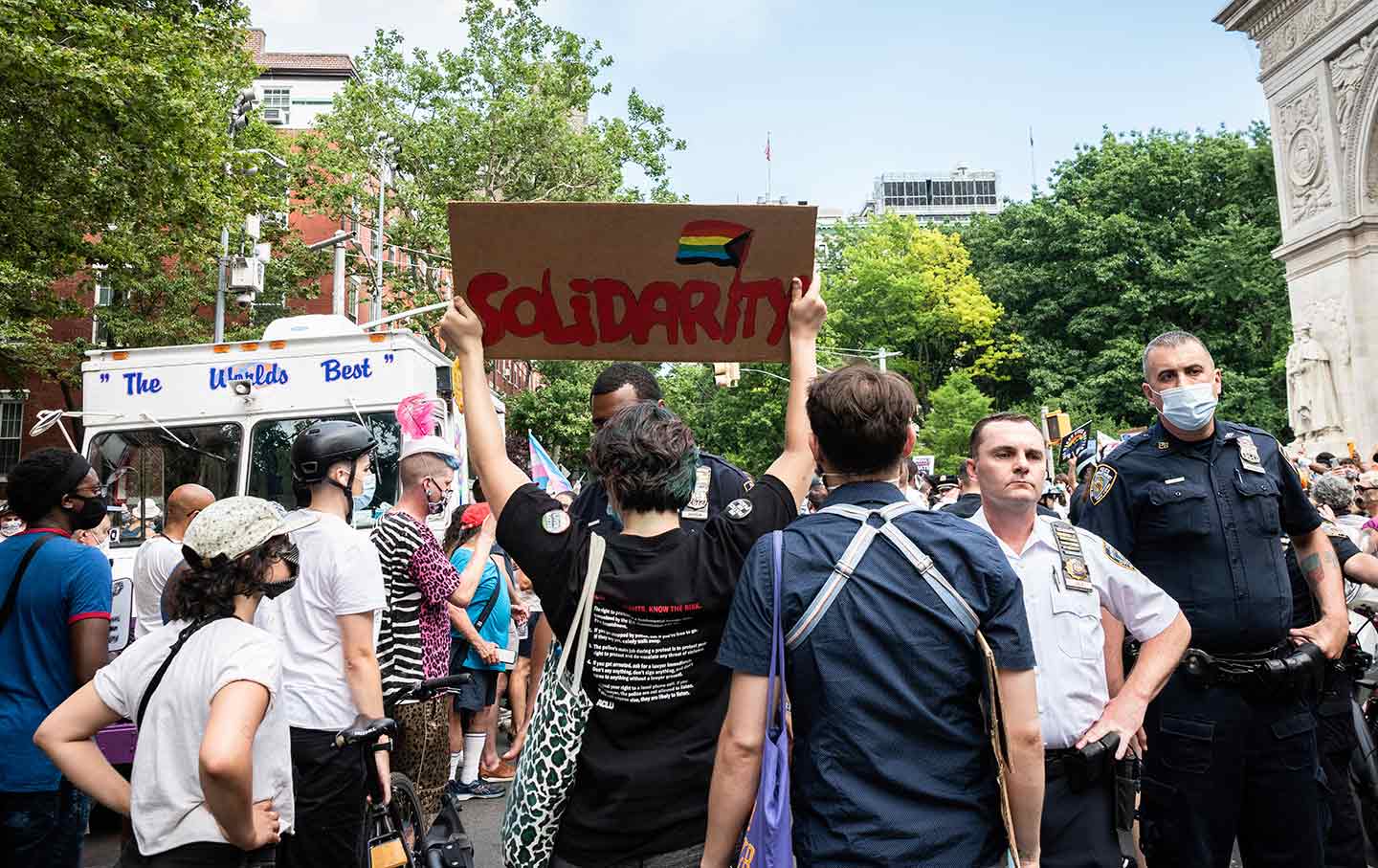
 Top ArticlesMaya Moore for the Win
Top ArticlesMaya Moore for the Win



 READ MORE00:14/00:30
READ MORE00:14/00:30
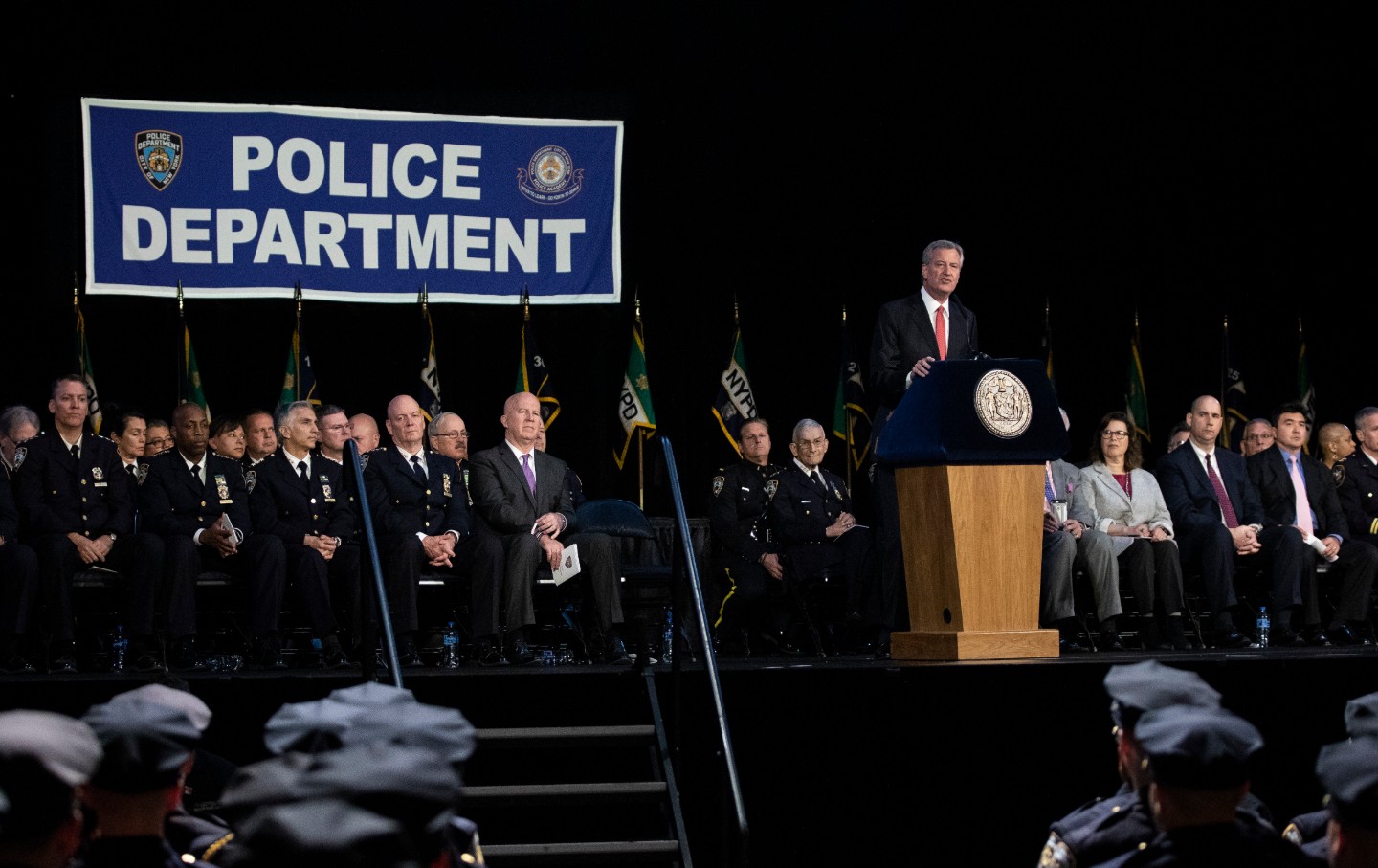

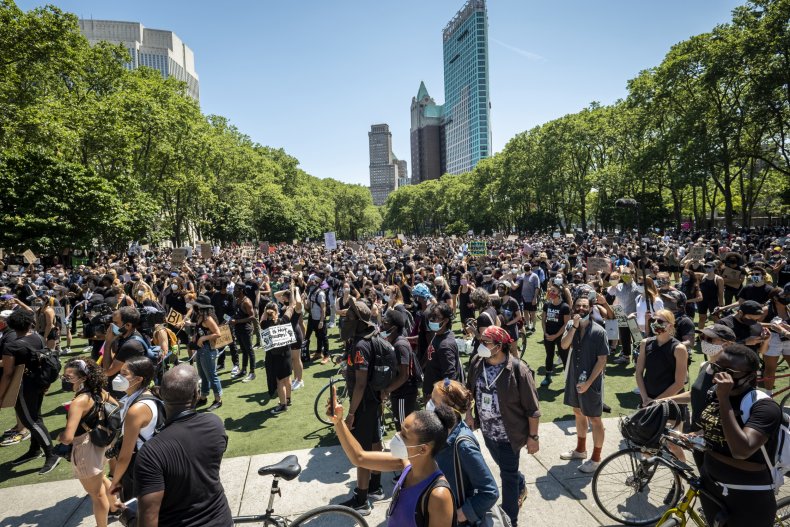
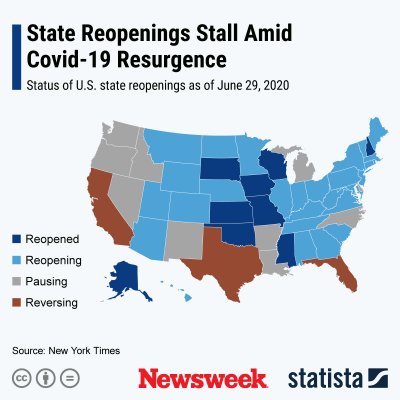 STATISTA
STATISTA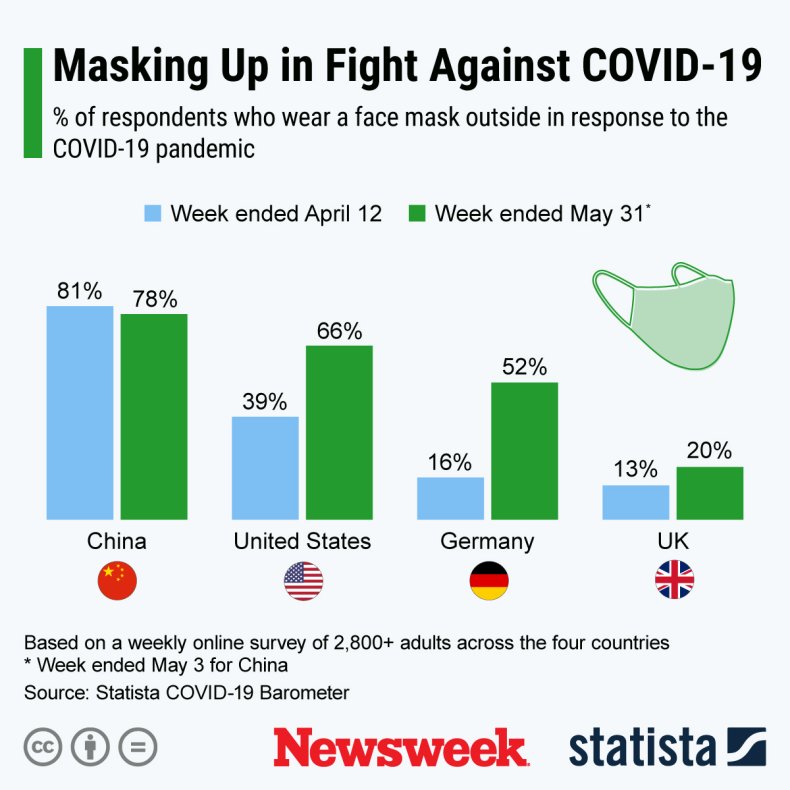 STATISTA
STATISTA A graph comparing newly confirmed COVID-19 cases in the U.S. and Europe.STATISTA
A graph comparing newly confirmed COVID-19 cases in the U.S. and Europe.STATISTA
